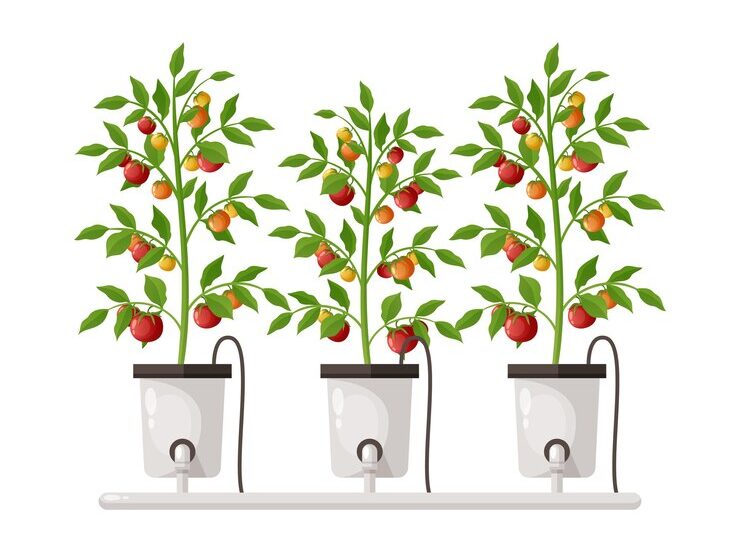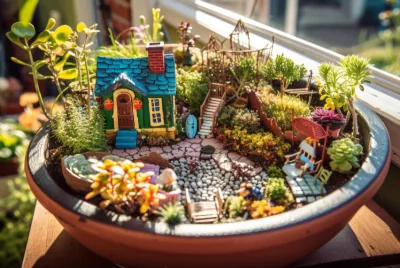Aquaponics 101: Basic concept
Hello everyone! Today’s topic is slightly different but as someone deeply fascinated by sustainable gardening practices, I can’t help but be enthralled by the ingenious world of aquaponics. This revolutionary method of cultivation merges aquaculture (the cultivation of fish) with hydroponics (growing plants without soil) to create a harmonious, closed-loop system that benefits both flora and fauna. In this article, we’ll dive into the intricate details of aquaponics, exploring its components, benefits, and how enthusiasts can embark on their own aquaponic journey.
Understanding Aquaponics: The balance between Fish and Plants
The Aquaponic System Components
1. Fish Tanks: The Aquatic portion
In the aquaponic symphony, fish tanks play a crucial role. Fish waste, rich in ammonia, becomes a nutrient source for the plants. Various fish species can thrive in this environment, with tilapia and trout being popular choices.
2. Plants Grow Beds
Above the fish tanks, we find grow beds filled with a growing medium like expanded clay pellets. These beds serve as the platform for plants to spread their roots and absorb nutrients from the water.
3. Water Pump and Pipes
A water pump circulates water from the fish tanks to the grow beds, ensuring a constant flow of nutrients to the plants. Pipes transport the water through the system, facilitating this organic exchange.
4. Beneficial Bacteria
Beneficial bacteria are the unsung heroes of aquaponics. They convert the ammonia from fish waste into nitrites and then into nitrates, which serve as a nutrient source for the plants. This natural filtration process keeps the water clean for the fish.
2. The Symbiotic Relationship: How Aquaponics Works
The aquaponic dance begins when fish are fed, producing waste in the form of ammonia. This water, now rich in ammonia, is cycled through the grow beds. Beneficial bacteria convert the ammonia into nitrates, providing a nutrient-rich solution for the plants. As the plants absorb these nutrients, the water is purified and returned to the fish tanks, completing the cycle.
Benefits of Aquaponics: A Symphony of Advantages
1. Resource Efficiency
Aquaponics is a champion of resource efficiency. It uses up to 90% less water than traditional soil farming, as water is recycled within the closed system.
2. Organic, Chemical-Free Farming
With no need for synthetic fertilizers or pesticides, aquaponics produces organic, chemical-free crops. This makes it an attractive option for health-conscious individuals and sustainable agriculture advocates.
3. Space Utilization
Aquaponics can be set up vertically, making it suitable for urban environments with limited space. This vertical farming approach maximizes crop yield per square foot.
4. Rapid Plant Growth
Plants in aquaponic systems often grow faster than those in traditional soil setups. The nutrient-rich water and efficient nutrient absorption contribute to accelerated growth rates.
Embarking on Your Aquaponic Adventure: Tips for Success
1. Choose the Right Fish and Plants
Not all fish are equal in the aquaponic world. Choose fish species that thrive in captivity and produce ample waste. Tilapia, catfish, and trout are common choices. Likewise, select plants that flourish in nutrient-rich water, such as lettuce, herbs, and tomatoes.
2. Balance the System
Maintaining a delicate balance is key. Ensure the pH levels, ammonia, nitrite, and nitrate levels are within optimal ranges. Regular testing and adjustments are necessary for a thriving aquaponic system.
3. Adequate Oxygenation
Both fish and plants need oxygen to thrive. Invest in quality aeration systems to keep the water oxygenated for the fish and to prevent root rot in plants.
The Future of Sustainable Agriculture
As an enthusiastic advocate for sustainable practices, aquaponics represents a beacon of hope in the realm of agriculture. The symbiotic relationship between fish and plants in this closed-loop system not only produces healthy, organic crops but also does so with minimal environmental impact. Whether you’re a seasoned gardener or a newcomer to the world of cultivation, considering an aquaponic setup might just be the sustainable twist your gardening journey needs.
FAQs About Aquaponics
1. Can any fish be used in aquaponics?
While many fish can be used, it’s essential to choose species that can tolerate the aquaponic environment. Tilapia, trout, and catfish are popular choices.
2. Do I need to use chemicals in aquaponics?
No, chemicals are generally not needed in aquaponics. The system relies on the natural processes of bacteria and nutrient cycling.
3. How often should I test the water in my aquaponic system?
Regular testing is crucial. Depending on the system’s size and stability, testing every week or two is recommended to ensure optimal water parameters.
4. Can I grow any plant in an aquaponic system?
While many plants thrive in aquaponic systems, some may be better suited than others. Leafy greens, herbs, and certain fruits like tomatoes are commonly grown.
5. Is aquaponics suitable for beginners?
Yes, aquaponics can be suitable for beginners, especially with proper research and attention to system maintenance. Starting small and gradually expanding is a wise approach.





